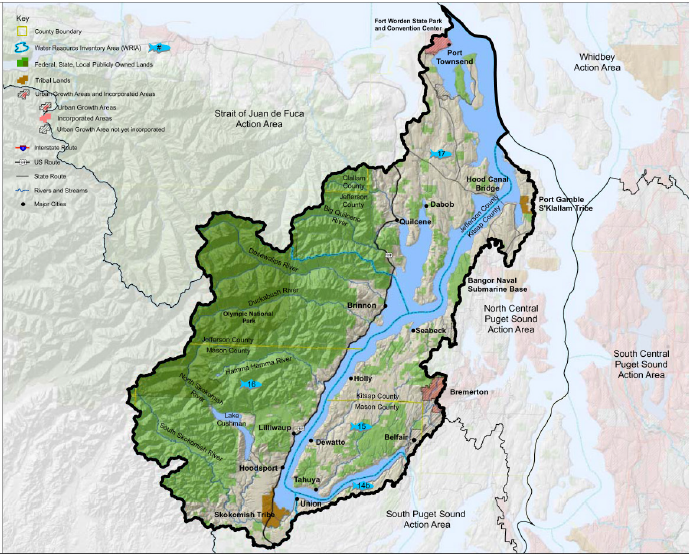"To be enlightened is to be aware, always, of total reality in its immanent otherness.... to resort whenever expedient to systematic reasoning" Aldous Huxley
I recently heard of an incredible resource called EOPS, the Encyclopedia of Puget Sound. While perusing this webpage I came upon Environmental Protection Agency report discussing the lack of evidence for anthropogenic causes of low oxygen in Hood Canal (Draft-EPA-and-Ecology-Report-on-Dissolved-Oxygen-Impacts-in-Hood-Canal-09-14-12). Hood Canal is a long fjord framing the Western extent of Puget Sound. Being familiar with the region and the issues of water quality in Hood Canal I was skeptical of the reports findings. See, its never just one thing. Because of its geomorphology Hood Canal is a very fragile ecosystem.
The waterway of Hood Canal is particularly susceptible to physical and chemical changes in its environment. The bathymetry and shape of the waterway makes the exchange of water from in and outgoing tides reduced. Hood Canal has a shallow lip of 160 feet near the mouth creating a long, deep and narrow bowl resulting in the slowest water circulation of all the Puget Sound sub-basins. This slow rate of incoming and outgoing tidal exchange causes the southern end of the canal to become especially susceptible to low dissolved oxygen (DO) As a result DO in the waters of Hood Canal have become a problem. It has been assumed that increased nutrient loads to the waterway from the population growth in the region was the cause of recent problematic low DO levels that have lead to fish kills in Hood Canal. However the EPA report suggests that evidence pointing at nutrient loading from population pressures is inconclusive and may have little to do with the low DO events. However, by focusing on a single source as the cause the EPA appears to be missing a fundamental aspect of all environmental science investigations. In my research lately I have been steadfast in my attempts to incorporate a holistic approach to deciphering the question at hand. See its never just one thing. Because of the fragility of Hood Canal as a result of its slow tidal exchange rate, any additional inputs that change the water chemistry is going to have an amplified impact. That impact alone may not be enough to tip the table, but when combined with additional low DO sources the system can quickly become overwhelmed by the cumulative impact.
 |
| Hood Canal |
In this case one likely source of additional low DO is the hypoxic waters off the Washington State coast. Lower levels of oxygen in the waters off the Pacific Northwest coast are becoming problematic and could be another sign of fundamental changes linked to global climate change. In some spots off Washington state and Oregon, the almost complete absence of oxygen has caused mortality of bottom dwelling species where low oxygen levels are most extreme. In addition large blooms of noxious bacteria which are resistant to hypoxic environments are taking their place. Areas of hypoxia, or low oxygen, exist naturally in the deep ocean. These areas however appear to be spreading, becoming more surface oriented. Such is the case in the Pacific Northwest, where low oxygen levels are encroaching on the continental shelf right off the coastline. The Pacific waters off Washington and Oregon are particularly susceptible to low oxygen events as a result of ocean circulation patterns. Natural low oxygen zones perched in the deeper waters off the Northwest's continental shelf are created during the summer, as northerly winds move surface water away from the shore. As a result oxygen-poor water migrates to the surface in a process called upwelling. These nutrient rich waters bring nutrients to phytoplankton forming one of the greatest ocean food chains in the world. The phytoplankton production is further enhanced by the warmer ocean temperatures. When the plankton sink and start to decay the decaying mechanism uses oxygen, which depletes the oxygen levels further. Southerly winds reverse the process in what's known as down-welling. Changes in the wind and ocean circulation since 2002 have disrupted the delicate balance between upwelling and down-welling on the Pacific Northwest Coast.
Because these coastal waters have been near the surface and closer to shore greater amounts of this oxygen poor water is making its way into Puget Sound and Hood Canal. Warmer water temperatures in Hood Canal are also producing more phytoplankton which undergo the same oxygen depleting life cycle that occurs in the ocean. See its never just one thing. Anthropogenic nutrient loading from increased population growth which the EPA suggests may not be a player plus the influx of oxygen poor ocean water from the Washington coast combined with the increase of phytoplankton production from warmer water temperatures have a cummulative impact that tips the scale in Hood Canals already delicately balanced water chemistry. So, can we say there is no evidence linking human activity to hypoxic water and fish kills in Hood Canal?
No comments:
Post a Comment